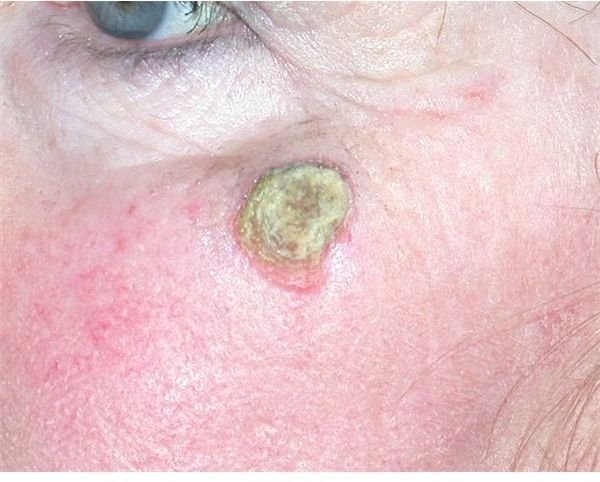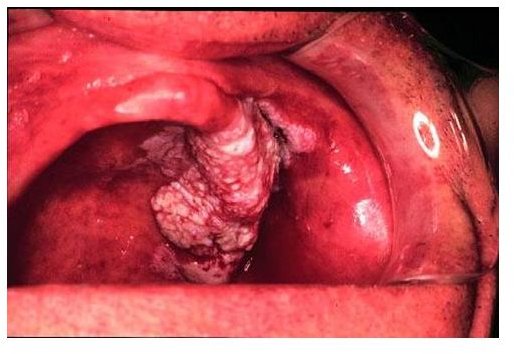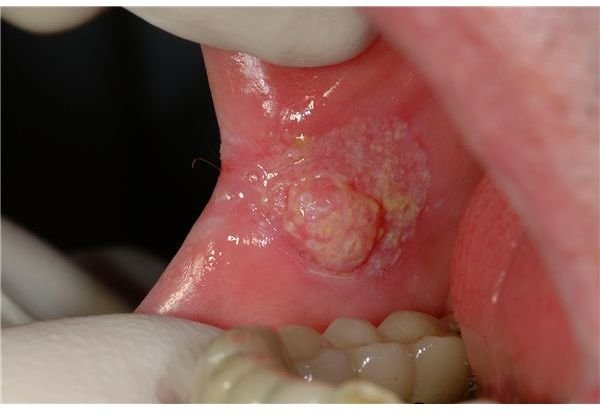What Does Oral Cancer Look Like in the Mouth or Cheek?
Oral cancer represents more than 2% of all cancers and 1.5% of all cancer-related deaths making it the eleventh most common cancer worldwide. Tobacco use is the most common risk for oral cancer development, accounting for 41% of cancers in men and 11% in women. Other common risk factors include: unhealthy diet, alcohol abuse and poor oral hygiene. The death rate for oral cancer is higher than that of common cancers such as cervical cancer, Hodgkin’s lymphoma, laryngeal cancer, testicular cancers, skin cancers, as well as endocrine cancers such as thyroid cancer.
Over 640,000 new global cases of oral cancers are diagnosed each year. While oral cancers are associated with an increase death rate, patients that survive oral cancer are at a 20 times higher risk of developing a second cancer within the next 5 years.
Multiple areas of the mouth can be affected by cancer. These areas include the lips, tongue, tonsils and larynx. Since oral cancers are highly prevalent, associated with a high death rate and much rarely found on the cheek, it is important to ask oneself, what does oral cancer look like in the mouth on the cheek?
Symptoms of Oral Cancer
Many oral cancers can be hard to identify, so what does oral cancer look like in the mouth on the cheek? The oral cancer prognosis is significantly better when it is caught in a localized area within the mouth. Therefore, it is beneficial for an individual to identify local mouth lesions before they metastasize. However, oral cancer is particularly dangerous in that in early stages it is generally unnoticeable and frequently presents without pain or symptoms. Patients may present with symptoms such as:
- Sores in the mouth that do not heal within two weeks
- Swellings, lumps or bumps inside the mouth
- White, red or dark patches in the mouth
- Bleeding in the mouth
- Numbness or pain in any area of the mouth
- Ulcers that look like a common canker sore
Because there are so many benign tissue changes that occur normally in mouth, it is consult a physician or dentist if there is any sore or discolored area of the mouth that does not heal within 2 weeks.
Other less common symptoms include: pain or difficulty in swallowing, speaking, or chewing, wart like masses, hoarseness or unilateral persistent earache.
Types of oral cancers of the cheek
While there are several types of oral cancers of the cheek, the most common form are squamous cell carcinomas (90% of all oral cancers). The majority of squamous cell carcinomas are located within the mouth (i.e. the floor of the mouth, tongue or cheeks). The remainder of the carcinomas is located on the lips, tonsils or bottom of the mouth. Another type of oral cancer of the cheek is called verrucous carcinoma or warty carcinomas, which appears as a white grooved surface on the mucosa of the mouth.
Oral squamous cell carcinoma
Squamous cell carcinomas are open sores or ulcers that grow into the underlying tissues of the cheek. While most noncancerous lumps found on the cheeks are freely movable, oral cancers tend to grow faster than benign lumps and feel much harder. Moreover, the discoloring of the lining of the mouth may also be a sign of cancer. These discolorations can sometime be brown, flat, freckle-like and found in an area of the cheek or lips that is habitually in contact with tobacco products. This is known as a smoker’s patch.
Picture of Squamous Cell Carcinoma of the Cheek

Picture of Verrucuous Carcinoma of the Cheek

Another cancer that afflicts the oral cavity is known as verrucous carcinoma or warty carcinoma. Early lesions from this cancer appear as white, translucent patches on an erythematous base of the cheek. Once the lesions have fully developed, white, soft, cauliflower-like papillomas with a pebbly surface extend throughout the oral mucosa. These tumors often grow metastasize to the lymph nodes.
Oral cancers can be hard to identify, but both dentists and doctors can easily diagnose oral cancer. Therefore, individuals with questionable lesions on their cheeks should ask a dentist what oral cancer looks like in the mouth on the cheek?
References
World Health Organization - https://www.who.int/mediacentre/factsheets/fs318/en/
Oral Cancer Foundation - https://www.oralcancerfoundation.org/facts/
Merck Manuals - https://www.merck.com/mmhe/sec08/ch113/ch113d.html
